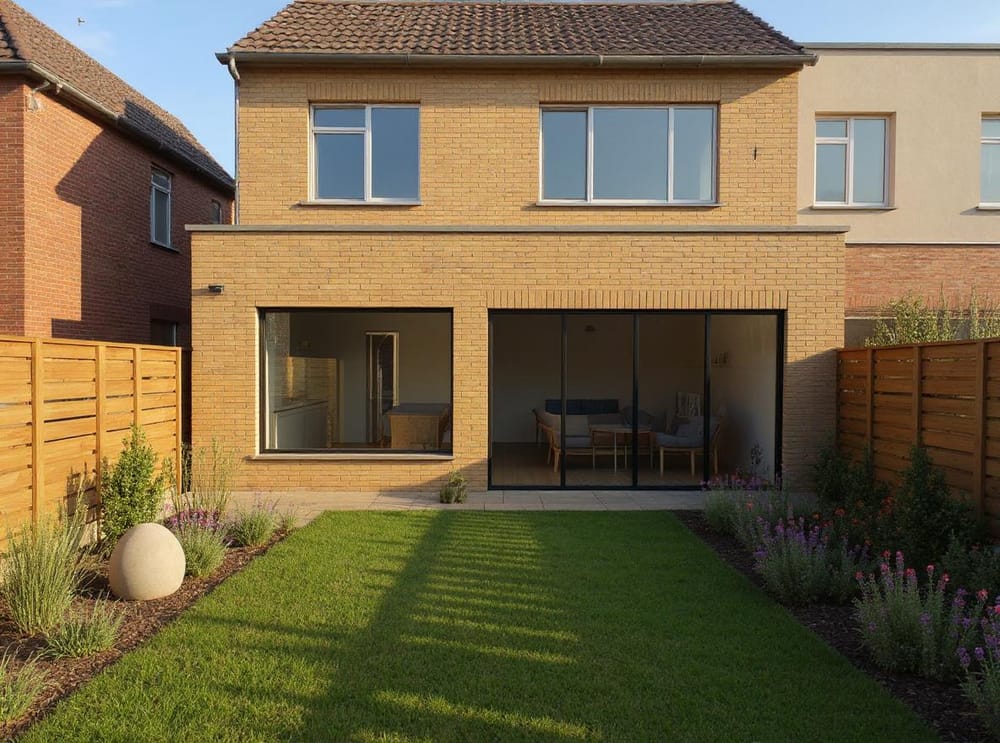Although unseen by the naked eye, foundations are one of the most vital components of any building. They are the base carrying the weight of the structure and, as such, must be carefully constructed.
Answering the question of how deep the foundations for your single storey extension should be is not straightforward because there are several factors that will need to be considered.
From the soil type, building regulations, to the effect surrounding trees might have, this post aims to break down the different factors that come into play when determining the depth of foundations for single storey extension.
Considering a single storey extension? Get your free Resi quote here.
Why is the type of soil important, and how can it affect foundation type?
Soil type is one of the major factors that affect the depth of foundations for any storey extension. Their ability to bear load and reaction to different weather conditions will also impact the depth of your foundations.
- Clay soil expands and contracts between 0.75 to 0.9m as the weather changes. Hence, the depth of foundations for single storey extension constructed on this soil must exceed 0.9m
- The depth of foundations for single storey extension on soil types susceptible to frost (for example, sand and chalk) must be below 450mm (this is typically the depth at which frost no longer affects the soil)
Do I need a soil survey?
Although conducting a soil survey is not a necessity, it is an added advantage since it gives you an idea of the condition of the subsoil throughout the site. Still, most sites start without a formal soil survey, relying instead on the designer’s knowledge or the building inspector’s expertise.
To learn more about conducting a soil survey, you should talk about your project with a member of our team.
The typical width of footings for a residential structure is 600mm. This usually comprises a 100mm inner course block, a 100mm cavity, and a 100mm outercourse, with a 150mm bearing on each side.
The footing depth, on the other hand, is typically determined by the soil type and the extent to which you must dig before striking undisturbed soil. Still, we recommend that the depth of the footing extends to a minimum of 12 inches after you’ve hit undisturbed soil. It also must extend at least 12 inches below the frost line (the depth to which the ground freezes in winter).
Tips from our building regulations experts
Here's some expert advice to note when deciding on the depths of foundation for single storey extension.
- When grading your site, the grounds immediately adjacent to the foundation footings should have a minimum slope of 5 percent, which must continue for at least 10 feet.
- The soil holding up the foundations should be firm and undisturbed. Undisturbed soil is soil that hasn't been graded, tilled, turned over, dug, or scraped.
- Foundations are site-specific so you should always get tailored advice before work begins.
How much budget do I need for my single storey extension foundations?
The cost of your foundations for your single storey extension will vary based on its size, the soil type, the kind of foundations, and the accessibility of the site. We estimate a strip foundation costs about £110 to £130 per m2, while trench fill foundations can cost between £130 to £165 per m2.
Nonetheless, these values are educated guesses. For a more accurate figure on how much your project will cost, you should discuss your project with a Resi expert.
You can also speak to someone on our team to find out about the financing solutions we offer.
Other considerations for your foundations
Besides the soil type, here are some more details to bear in mind when digging the foundations for your single storey extension.
Adjacent structures
When excavating for new foundations, you must ensure that the new foundations don't damage adjacent structures. Generally, it's recommended that the depth of the new foundations should correspond to the depth of the foundations of the buildings next to it. Still, care should be taken when the excavation runs alongside an existing footing. We recommend you excavate and concrete the foundations in shorter sections to avoid damaging the entire length of an adjacent structure.
Trees
Trees draw in moisture from the ground around and beyond them through their roots. As the trees draw moisture from the ground, there is a tendency for the soil to shrink depending on the size and type of the tree and the type of the soil.
Clay, for example, shrinks more than other types of soil. Hence, the presence of trees around clay soil areas means the foundation has to be dug deeper than usual.
Drains and sewers
As the weight from the foundation of a building transfers to the soil, it doesn’t just bear directly downwards but spreads out at a radius of 45 degrees. This means any drain or sewer located within that radius risks being damaged. To avoid this, the depth of the extension’s foundation should at least match the depth of the drains.
Ground condition
When digging a foundation, the topsoil is removed to expose good undisturbed “virgin” soil - soil that has not been built on or tampered with. In cases where the soil has been backfilled, probably after laying a drain or levelling a site, the ground must be dug until undisturbed soil is found. Only then can the foundation be poured.
Landfill site
Properties constructed on landfill sites will require a more complicated foundation because the depth of undisturbed ground could be metres deep. In such cases, we recommend you install a raft foundation involving the use of thick reinforced floor slabs.
Having an adequately laid foundation that follows all the building regulations and can effectively carry the weight of your extension is vital to the lifespan and safety of your extension. As a result, it’s crucial you employ the right people, contractors who are experts at their jobs, to ensure you get value for your money.
Thankfully, we have a platform to help you with this. Our Resi Connect service can introduce you to tradespeople in your area to help you make an informed decision.




















